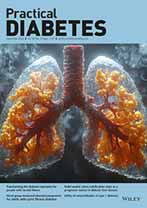The journal comes of age
To my mind the peer-reviewed journal is arguably the most effective educational medium for disseminating up to date and relevant medical knowledge: providing an immediacy of information along with an opportunity for reflection and critical appraisal. Over 20 years, Practical Diabetes International has endeavoured to promote understanding of many aspects of diabetes care within multi-professional clinical practice and it is with pleasure that we record this special anniversary and specific issue, guest edited by Henry Connor to mark the occasion.
When Arun Baksi, founding Editor, stood down in 19921 Practical Diabetes (as the journal was then known) was firmly established, highly regarded and a tribute to his vision and creativity. Taking over the reins was a hard act to follow. Yet, as the various anniversary papers in this issue relate, never has there been so much ongoing innovation and development within the speciality of diabetes. Equally, the journal has needed to adapt, evolve and meet these new challenges.
Without doubt these challenges can be both inspiring and intellectually rewarding, but at the same time the responsibilities of editorial governance2 have become more evident and demanding. It would be presumptuous to assume that the ‘Journal’ has achieved the lofty status of Mount Olympus as envisaged by Trollope3 when ‘Cabinets are called upon to obey; none but the fools doubt the wisdom of the Journal; and none but the mad dispute its facts’, but we recognise that publications such as Practical Diabetes International do have the powerful potential for persuasion and determination of policy. Ensuring the integrity of the journal places increasing responsibility on editorial processes and, in line with modern requirements, we subscribe to the principle of robust peer review, to the need for high quality and accurate information and to our obligation to maintain editorial balance without bias or conflict of interest.
It has been a privilege to work with so many friends and colleagues over these 20 years and I am indebted to all who have given their time and energies to the journal in so many different ways. The regular publication of the journal is a remarkable success in itself with many editorial and publishing components to be collated within inevitable deadlines. Practical Diabetes International has been hosted by a number of publishers over these years, but it is now very well placed and looking forward to the next 20 years. My thanks go to all who have contributed to the Editorial Team, but in particular the exceptional contribution made by Felix Burden, Ian Campbell and John Wales should be recorded. Last but not least, our very special thanks are to James Wroe who has steered the journal over all these years in his inimitable courteous and professional way—a singular achievement.




